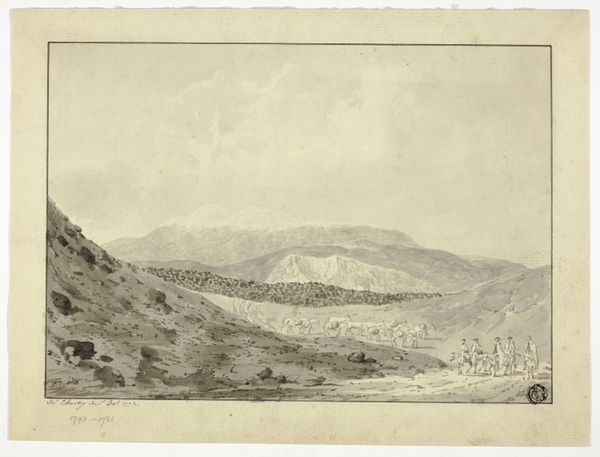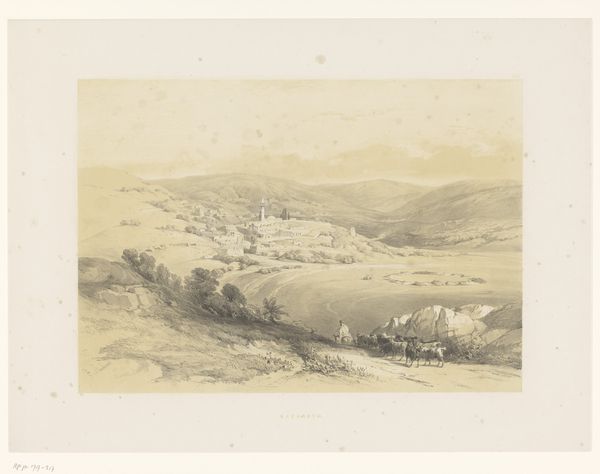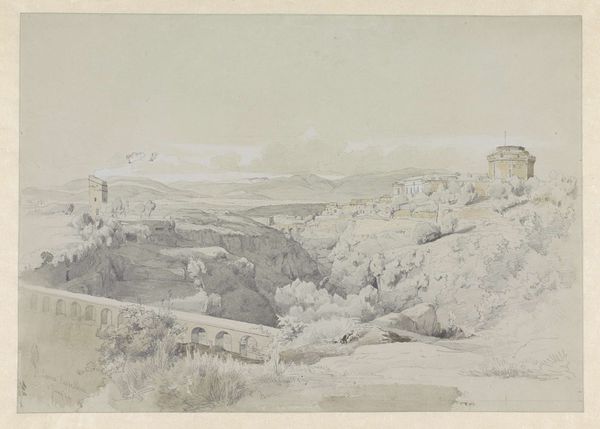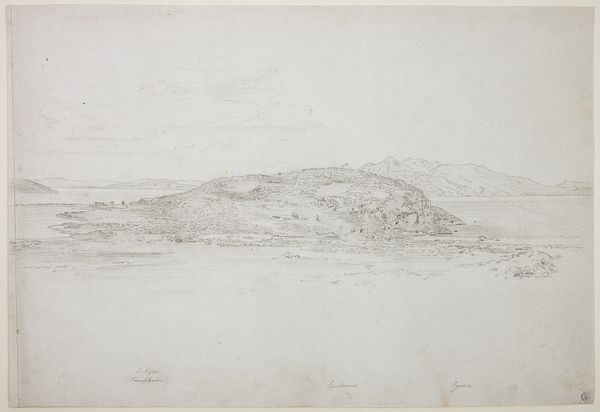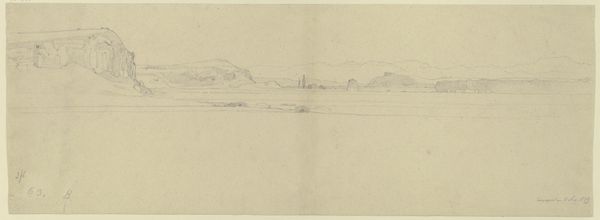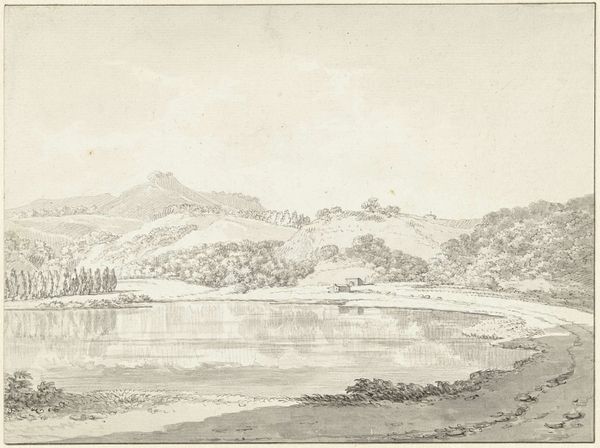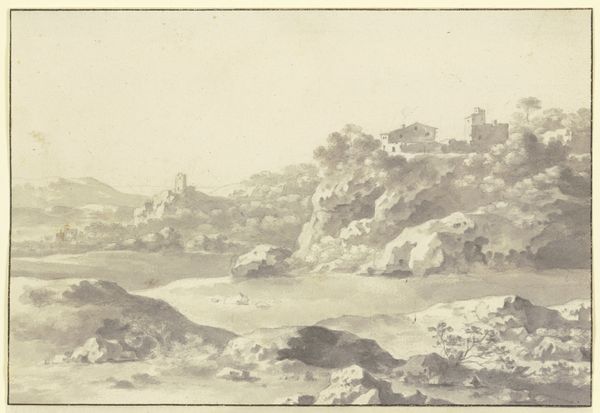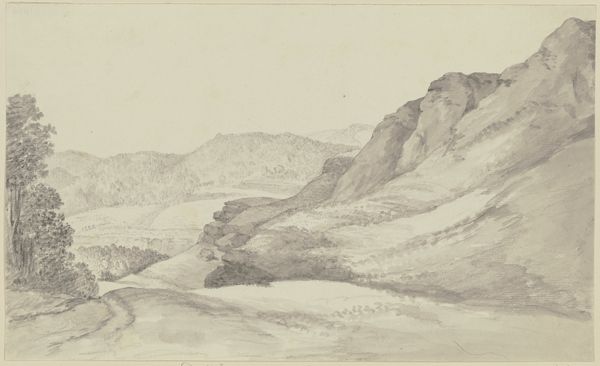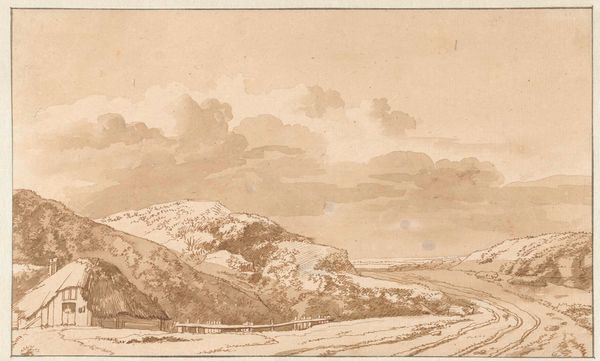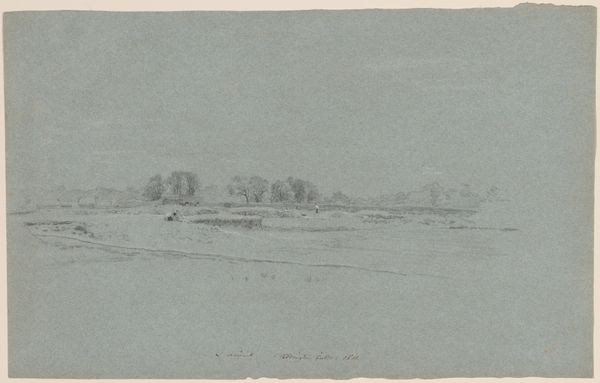
drawing, pencil
#
pencil drawn
#
drawing
#
lake
#
pencil sketch
#
landscape
#
romanticism
#
pencil
Dimensions: height 510 mm, width 675 mm
Copyright: Rijks Museum: Open Domain
Curator: Hendrik Voogd created this landscape drawing titled "Het meer van Verni, het dorp Genzano en het dorp Verni," dating it somewhere between 1788 and 1839. It depicts a serene Italian vista using pencil on paper. Editor: It’s quite subtle. The monochromatic rendering makes the whole scene feel almost ghostlike, a memory clinging to the page. I sense both stillness and a sort of melancholic quiet here. Curator: Voogd, known for his contributions to Dutch Romanticism, was deeply influenced by Italian landscapes. Consider the placement of Verni and Genzano around the lake, a positioning perhaps chosen to illustrate humanity’s relationship with nature and settlement patterns during this period. The very act of sketching en plein air was a cultural and artistic shift at that time. Editor: And there's an interesting element of romanticising rural labor, or perhaps omitting it entirely. I notice an absence, a glossing over of the economic and social realities faced by rural communities. Who lived there? What was life actually like for them? The drawing almost feels escapist in its gentle portrayal. Curator: That's a fair critique. Looking at his technique, the gentle shading suggests a softening of any harsh edges or realities, allowing for an idealized interpretation of the land and its connection to cultural memory. The lake itself reflects calmness, almost like an ethereal looking-glass reflecting societal and individual nostalgia. Editor: I see the lake more as a lens through which to reflect upon present inequalities rather than romanticize a rosy-tinted past. Whose stories have been intentionally left out? Who controls these landscapes now? And how have social structures shaped this environment? Curator: I concede, interpreting such imagery critically demands this sort of lens, helping uncover hidden meanings behind conventional aesthetics and artistic trends. Editor: Absolutely. Examining landscapes requires questioning our role within them. What appears peaceful on the surface can sometimes mask deeper inequalities, even today. Curator: Indeed. Understanding context can greatly shape how we interpret such subtle, symbolic cues. It enriches our appreciation, reminding us of complex meanings interwoven with artistry. Editor: Well said. Considering multiple perspectives is vital; looking beyond what seems superficially calming and acknowledging the multi-layered narrative opens it to modern analysis and dialogues.
Comments
No comments
Be the first to comment and join the conversation on the ultimate creative platform.
